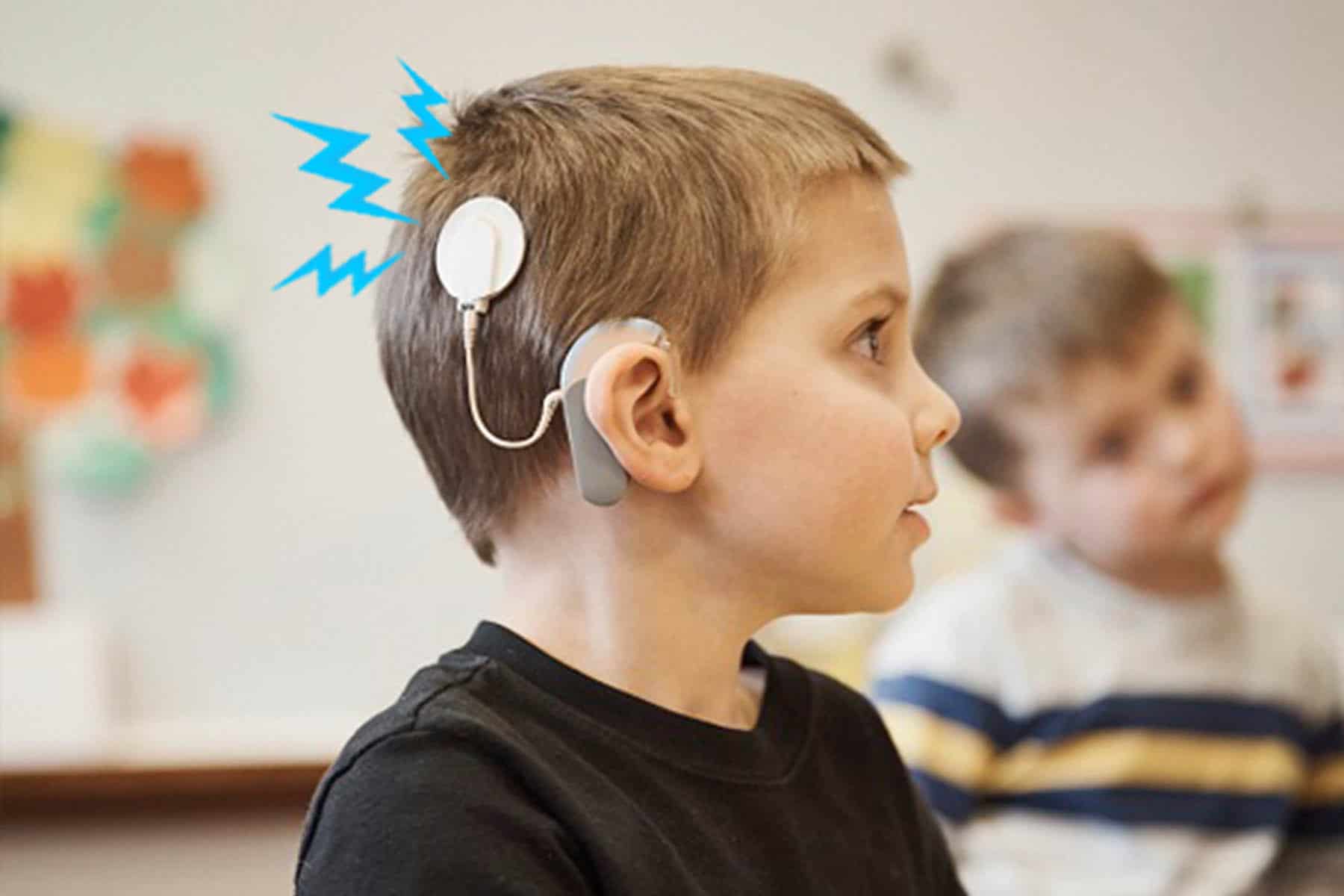CID’s physical education (PE) teacher, Sunny Kemp, recently wrote a blog post about PE considerations for children with hearing loss. She highlighted static electricity as a factor to take into consideration to ensure that children who wear cochlear implants maintain safe, consistent access to sound. When teachers (and parents) are made aware of the impact static may have on devices, they often become concerned about what activities are safe. In order to alleviate fears, it is important to first understand why static can be problematic and then consider what can be done to avoid issues.
Understanding cochlear implants and static electricity
A cochlear implant (CI) is a surgically placed device used by some children and adults with significant hearing loss. A CI is comprised of two parts, one external and one internal. An external sound processor is worn on the ear and picks up sound from the environment. It sends the sound to the internal electrode array, which is placed by a surgeon. The sound is delivered to the auditory nerve through electrical pulses. A cochlear implant is specifically programmed, or mapped, for each individual listener by an audiologist.
Static electricity is a build-up of electrical charge that can collect on a person or object. If two objects or people have a difference in charge, they may notice a discharge of static electricity (“shock”) when they touch. This is called electrostatic discharge (ESD). ESD is often felt as a shock or seen after rubbing two balloons together and then touching your hair (frizz!).
Because cochlear implants are electrical devices, there is risk of damage to the internal and /or the external component if faced with high levels of static electricity. The static electricity would, however, need to converge directly to the external processor for damage to occur. If the child experienced a shock to the arm, for example, the device would not be impacted.
What are the potential effects of static on cochlear implants?
If a build-up of static electricity is directly discharged to the external processor, there is risk that the map, which is the unique listening program stored inside the device, will be erased. If a child’s map is erased, they will not be able to hear from their implant(s). They will need to see their audiologist for reprogramming or use a back-up device, if available.
The internal portion of the child’s cochlear implant is protected from the initial discharge of static electricity through internal shock protection. While rare, if there are subsequent shocks to the external processor, there is a chance that the internal portion could be damaged and require medical follow-up with the child’s ear nose and throat physician (ENT).
What precautions can be taken to avoid device damage?
Current cochlear-implant design limits the risk of damage from static electricity by adding numerous protections within the devices themselves, and while the risk is very low in life’s everyday run-ins with static electricity, there are precautions to consider to reduce the risk even further.
1. Avoid plastic playground equipment. Metal slides are a great, inclusive option. If plastic slides are unavoidable, remove the external processor completely from the child’s head while using plastic equipment.
2. Consider using static guard or fabric softeners on clothing, carpets or car seat covers. If you notice a shirt or sweater is staticky, take off the external processor before the child dresses or undresses.
3. Ground yourself before directly touching the child’s device. This can be done by touching something else such as metal, wood or a different part of the body first. Doing this will eliminate the static electricity.
4. Van de Graaff generators, as seen at the St. Louis Magic House, pose a risk to both the external processor and internal device, even without the external processor on, so it is better to look and not touch.
By taking the necessary precautions, the risk of static electricity damage to devices can be minimized and most activities can be enjoyed safely. For specific concerns, reach out to your student or child’s audiologist.

Johanna Lowell is a pediatric audiologist at CID – Central Institute for the Deaf. Dr. Lowell joined the CID Audiology team in 2020 shortly after graduating with her doctoral degree from Washington University School of Medicine in St. Louis. Prior to graduating, she also completed her year-long externship and final year of her doctorate at CID. She currently serves children between birth through 13.












